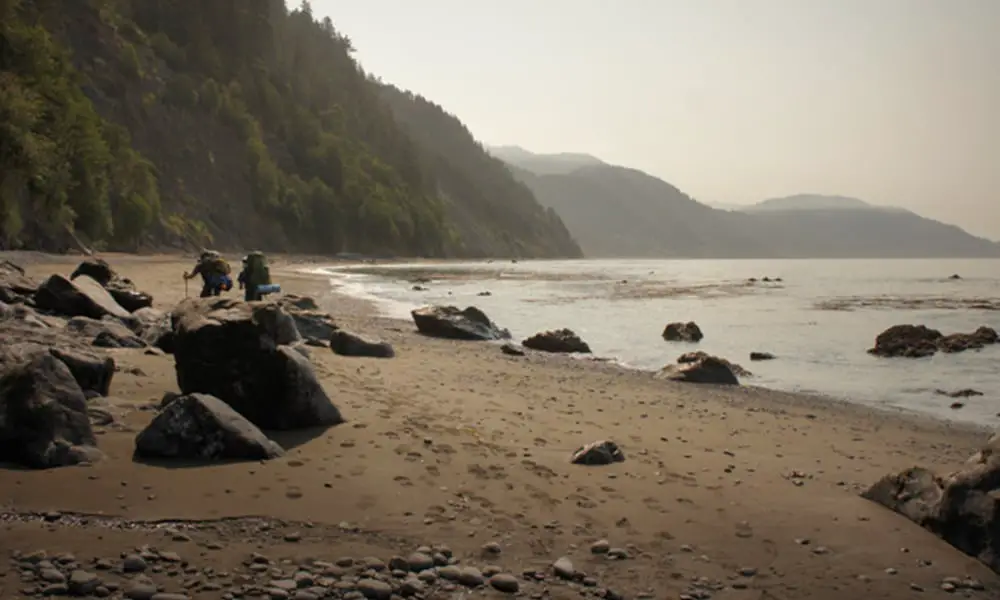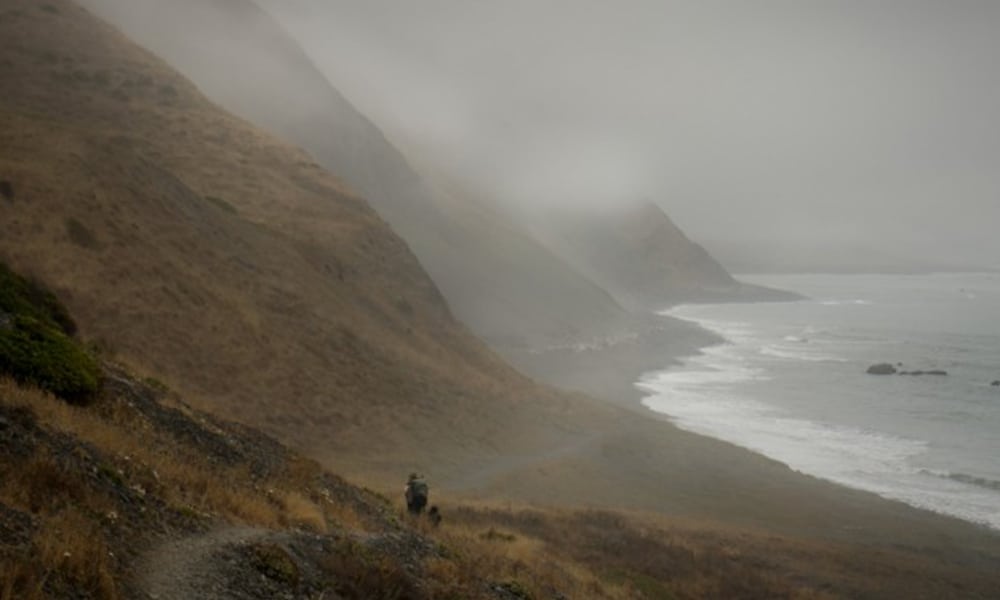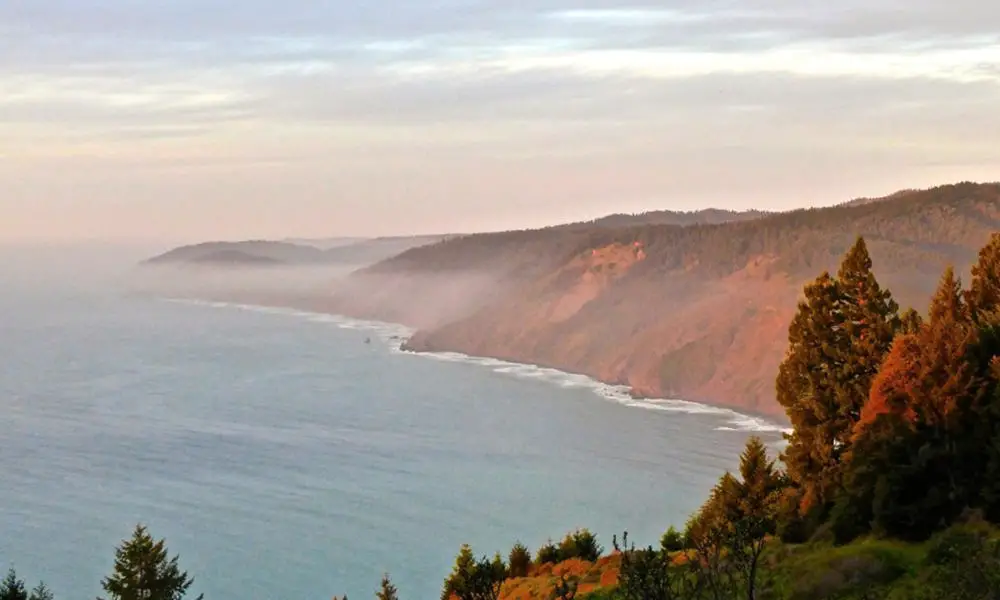Table of Contents
*This post may contain affiliate links. As an Amazon Associate we earn from qualifying purchases.
There are many approaches you can take when planning and executing any kind of trip. Some travelers choose their destination according to the most popular landmarks in the world. These kinds of traveler’s relish tourist activities like visiting museums, eating in fancy restaurants, and going on various tours.
On the other end of the spectrum, some travelers prefer locations that are off the beaten path. These travelers tend to be more adventurous, craving the uncertainty and risk that comes with accessing remote locations.
In this article, we discuss one of these remote locations that is famous for its dangerous nature. In particular, we discuss the Lost Coast Trail, emphasizing the adventurous features of this picturesque route.
In each section, we focus on a new question related to this trail, providing an in-depth answer for potential visitors.
Towards the end of the article, we offer our final thoughts on the future of the Lost Coast Trail.
WHAT ARE THE FEATURES OF LOST COAST TRAIL?

- The Lost Coast Trail traverses 25 miles of California coastline. It lies in the King Range National Conservation Area and runs from the Mattole Beach trailhead to Black Sands Beach near Shelter Cove.
- The closest coastal highway to the Lost Coast Trail is in the city of Ferndale, California, about 90 miles north.
- This is a testament to how isolated this trail is, making it difficult to access.
- Technically, these 25 miles only represent the northern portion of the Lost Coast Trail. A southern section exists that stretches for about 32 miles, ending in Usal Beach.
- However, most people stick to the norther part due to its proximity to beaches and looser regulations.
- More generally, the Lost Coast refers to more than 80 miles of undeveloped coastline that the builders of Highway 1 decided to avoid due its rugged nature.
- Outside of Alaska, this is the longest stretch of undeveloped US pacific coastline. This makes it a popular destination for many explorers interested in the purity of nature.
- Hiking only the northern part of the trail takes most travelers between 3 and 4 days. Due to the rough terrain, this hike is considered strenuous.
- Creek crossings are common and parts of the trails require intertidal zone hiking. Furthermore, wind exposure can be intense, black bears and rattlesnakes can be encountered, and a storm at the wrong time could be devastating.
- The Lost Coast Trail is not for the faint of heart.
- Children are not advised unless they are expert hikers and campers. Most dogs do not do well on the trail because the sand and gravel can damage their paws.
- Furthermore, no reservations are needed. However, if you intend on hiking overnight, you will need to obtain a permit.
WHAT ARE THE BENEFITS OF LOST COAST TRAIL?
The Lost Coast Trail offers many benefits for adventurous travelers willing to indulge its volatility and mystery.
Ultimately, this is a trail that isn’t traversed often.
Yes, it has increased in popularity in recent years. But, it’s strenuous nature and remote location has kept the numbers of successful hikers low.
Some people view the difficulty in accessing the northern trailhead as a drawback. However, it can also be seen as a benefit. This is because such obstacles deepen the experience and weed out the less savvy explorers. When even getting to the trail is an adventure, you know you’ve met your match.

This is the case with the Mattole Beach trailhead, as this is a location not served by public transportation. Several specialty services exist nearby that will bring users from Shelter Cove to Mattole Beach but not vice versa.
This means that once you start hiking the trail southbound, it might be difficult to stop prematurely. Even if you turned around, no shuttle bus would take you from the beginning of the trailhead to the end.
Of course, hiking the Lost Cost Trail doesn’t mean you’re totally stranded. Arrangements can always be made. The point is that taking on this challenging trail entails a significant investment. These high stakes are exactly what many adventurers are seeking.
Many hikers are bored by the easy trails featured in some state or national parks. These hikers seek out the most rugged conditions and remote locations, wanting to test their survival skills and push themselves to the limit. It’s in these moments that they truly grow and develop.
In this sense, even though successfully traversing the Lost Coast Trail entails tons of preparation and prior analysis, you will definitely emerge from this experience stronger and more alive than ever before.
On another level, the experience requires intuition and spontaneity, making it the ultimate challenge for explorers.
THE BENEFITS OF BEING PREPARED
In spite of all these dangers and obstacles, most people have quite a pleasant journey hiking the Lost Coast Trail.
Doing your homework ahead of time and being well supplied should lead to an overall smooth experience.
If you are truly prepared to be immersed in the undeveloped coastline of California for at least 3 days, then the experience will be stimulating and exciting. You’ll be able to enjoy the golden sunsets over the ocean, the abundance of fauna and flora, and the fresh water available in the streams.
Many people use the Lost Coast Trail as an opportunity to reflect on some component of their life. The solitude and isolation can provide a safe cocoon for expressing parts of yourself that are usually dormant.
Many artists use the Lost Coast Trail in order to connect with some system of ideas on a deeper level.
If you park at the Shelter Cove trailhead, then you’ll be able to traverse the trail at your own pace, as you won’t have to schedule a shuttle service to drive you back to your car. Many hikers like to do this, allowing them to spend several days at a particular campsite reveling in the marvels of their habitat.
If you do plan on doing this, make sure you bring plenty of extra food.
WHAT ARE THE DRAWBACKS OF LOST COAST TRAIL?
The main drawback of the Lost Coast Trail is all the dangers that are present.
About 9 miles of the trail consists of walking in intertidal zones that are impassable at high tide. The extent of this impassibility depends on the time of day, the section of the trail, and many other factors. Generally speaking, the lower the tide is, the easier these sections are to cross. The higher the tide, the more danger that is possible.
In this sense, you have to be extremely cautious about when and how you cross these regions.
Just because it’s low tide doesn’t mean you should cross these sections, yet many travelers still do.

Being extremely adventurous can be a double-edged sword at times because it can result in reckless, impulsive behavior.
Just imagine a traveler who’s already hiked 15 miles for the day but decides to push through an intertidal zone due to the low tide opportunity.
Yet, if the hiker suddenly burns out halfway through the zone or gets injured, this could be a disastrous situation.
In this sense, being adventurous is a necessary but not sufficient condition for successfully completing the northern section of the Lost Coast Trail.
Hikers must also be patient, abstract, and methodically organized. Very few hikers have this combination of traits, making the Lost Coast Trail inaccessible to most.
Additionally, the Lost Coast Trail can also be an expensive endeavor.
This stems from all the transportation costs required to get to the trailhead as well as the cost of the supplies and food you must bring with you. These costs can add up, making the trail difficult to traverse for anyone on a budget.
It can certainly be done, but you’ll have to rely on shared transportation costs and minimal supplies.
OUR FINAL THOUGHTS ON LOST COAST TRAIL
We think it’s a shame that many people don’t witness the marvels of the Lost Coast Trail due to its costs, dangers, and remote location.
Some travelers have suggested the development of various stations and buildings throughout the trail in order to make each part of the trail more accessible. This would allow visitors to start at any section of the trail as well as leave at any point. This would also make the trail safer.
Yet, many travelers are against this, claiming that it compromises the undeveloped nature of the trail. These travelers think the inaccessibility of the trail actually preserves its value, as the few hikers that do complete it feel even more triumphant.
Regardless, if you do find yourself on this divine trail, take a moment to appreciate all that mother earth provides.
It can be easy to get caught up in abstractions like money or danger, especially when we are separated from the raw forms of nature that birthed us.
Returning to this unsullied state of existence can be extremely empowering and life-changing.

